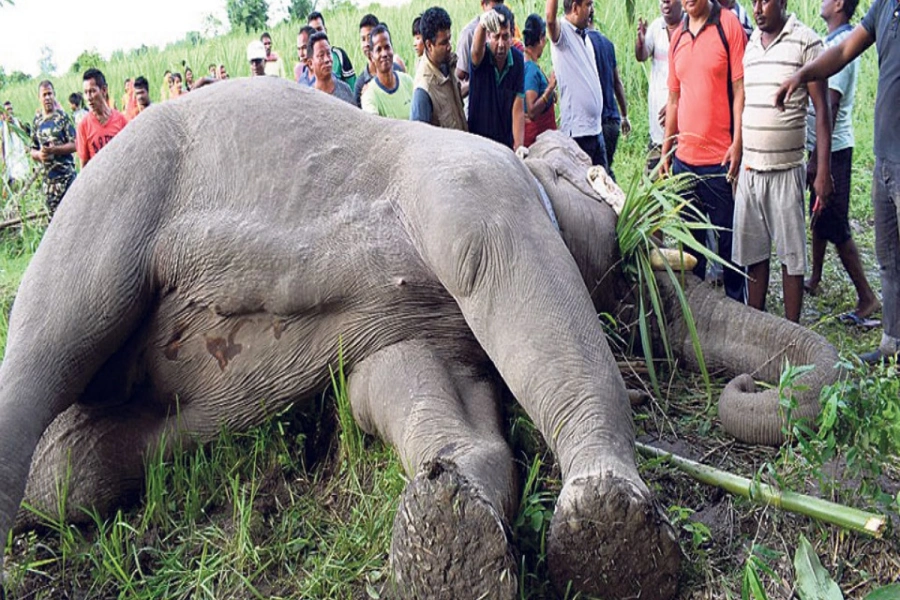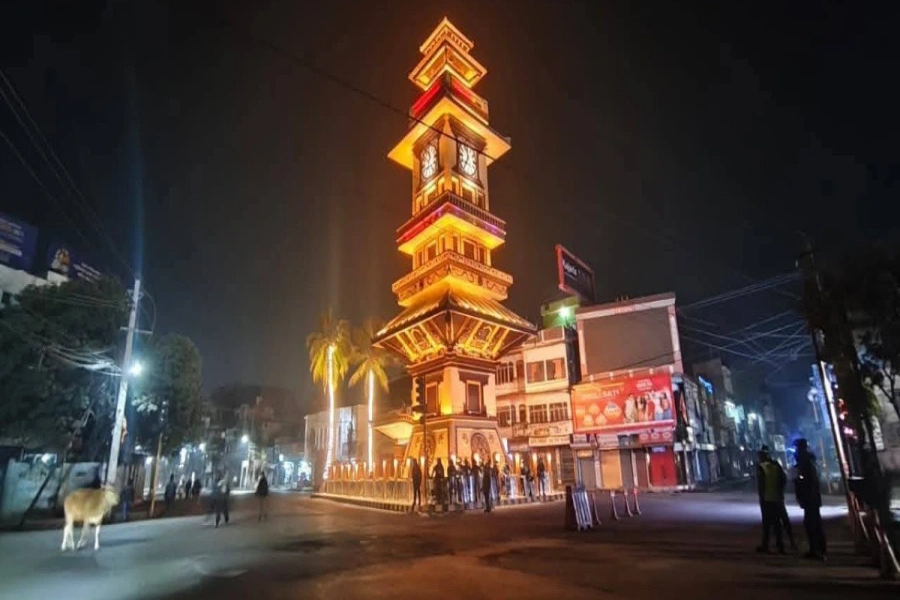CARITA BEACH, Dec 23: An eruption of one of the world’s most infamous volcanic islands is believed to have triggered a tsunami that killed at least 222 people in Indonesia during a busy holiday weekend. The waves smashed onto beaches at night without warning, ripping houses and hotels from their foundations in seconds and sweeping terrified concertgoers into the sea.
More than 800 people were injured and dozens more missing after the tsunami hit around the Sunda Strait at 9:27 p.m. Saturday, the Disaster Management Agency said. The toll could continue to rise because some areas had not yet been reached. Scientists, including those from Indonesia’s Meteorology and Geophysics Agency, said Sunday that the tsunami could have been caused by underwater landslides or those occurring above ground on Anak Krakatau’s steep slope following its eruption.
The volcano’s name translates to “Child of Krakatoa,” a volcanic island formed over years after one of the largest, most devastating eruptions in recorded history occurred at the Krakatoa volcano more than a century ago. The scientists also cited tidal waves caused by the full moon.
Dramatic video posted on social media showed the Indonesian pop band “Seventeen” performing under a tent on a popular beach at a concert for employees of a state-owned electricity company. Dozens of people sat listening at tables covered in white cloths while others bobbed to the music near the stage as bright strobe lights flashed and theatrical smoke was released.
A child could also be seen wandering through the crowd. Seconds later, with the drummer pounding just as the next song was about to begin, the stage suddenly heaved forward and buckled under the force of the water, tossing the band and its equipment into the audience.
The group released a statement saying their bass player, guitarist and road manager were found dead, while two other band members and the wife of one of the performers remained missing.
“The tide rose to the surface and dragged all the people on site,” the statement said. “Unfortunately, when the current receded our members were unable to save themselves while some did not find a place to hold on.”
Tsunami threat recedes from huge Pacific volcanic eruption

Tourists who were enjoying the long holiday weekend ahead of Christmas were also affected.
“I had to run, as the wave passed the beach and landed 15-20m (meters, or 50-65 feet) inland,” Norwegian Oystein Lund Andersen wrote on Facebook. The self-described photographer and volcano enthusiast said he was taking pictures of the volcano when he suddenly saw the water racing toward him. He and his family fled safely to higher ground.
The Anak Krakatau volcano lies in the Sunda Strait between Java and Sumatra islands, linking the Indian Ocean and Java Sea. It erupted about 24 minutes before the tsunami, the geophysics agency said.
The worst-affected area was the Pandeglang region of Java’s Banten province, which encompasses Ujung Kulon National Park and popular beaches, the disaster agency said.
Agency spokesman Sutopo Purwo Nugroho said 222 deaths had been confirmed and at least 843 people were injured.
Indonesian President Joko “Jokowi” Widodo expressed his sympathy and ordered government agencies to respond quickly to the disaster.
“My deep condolences to the victims in Banten and Lumpung provinces,” he said. “Hopefully, those who are left have patience.”
In the city of Bandar Lampung on Sumatra, hundreds of residents took refuge at the governor’s office, while at the popular resort area of Anyer beach on Java, some survivors appeared lost while wandering.
Azki Kurniawan, 16, said he was undergoing vocational training with a group of 30 other students at Patra Comfort Hotel when people suddenly burst into the lobby yelling, “Sea water rising!”
With his eyes swollen and red from crying, he recalled being confused about what was happening because he did not feel a big earthquake, which usually serves as a warning before a tsunami strikes. He said he ran to the parking lot to try to reach his motorbike. But by the time he got there, it was already flooded.
“Suddenly a 1-meter (3.3-foot) wave hit me,” he said. “I was thrown into the fence of a building about 30 meters (100 feet) from the beach and held onto the fence as strong as I could, trying to resist the water, which felt like it would drag me back into the sea. I cried in fear ... ‘This is a tsunami?’ I was afraid I would die.”
The 305-meter (1,000-foot) -high Anak Krakatau volcano, located about 200 kilometers (124 miles) southwest of Jakarta, Indonesia’s capital, has been erupting since June, sometimes spewing glowing lava and tall columns of ash. In July, authorities widened its no-go areas to 2 kilometers (1.2 miles) from the crater.
However, Anak Krakatau remains much smaller than Krakatoa when it blew in 1883, killing more than 30,000 people. Krakatoa launched far-reaching tsunamis and created so much ash, day was turned to night in the area and a global temperature drop was recorded. The violent explosions sank most of the island into the volcanic crater under the sea, and the area remained calm until the 1920s, when Anak Krakatau began to rise from the site. It continues to grow each year and erupts periodically.
Gegar Prasetya, co-founder of the Tsunami Research Center Indonesia, said Saturday’s tsunami was likely caused by a flank collapse — when a big section of a volcano’s slope gives way. He said it’s possible for an eruption to trigger a landslide above ground or beneath the ocean, both capable of producing waves.
“Actually, the tsunami was not really big, only 1 meter (3.3 feet),” said Prasetya, who has closely studied Krakatoa. “The problem is people always tend to build everything close to the shoreline.”
Nine hotels and hundreds of homes were heavily damaged by the waves. Broken chunks of concrete and splintered sticks of wood littered hard-hit coastal areas, turning beach getaways popular with Jakarta residents into near ghost towns. Vehicles tossed by the waves remained belly-up in the rubble or were lodged in the air under collapsed roofs. Debris from thatch-bamboo shacks was strewn along beaches.
Indonesia, a vast archipelago of more than 17,000 islands and home to 260 million people, lies along the “Ring of Fire,” an arc of volcanoes and fault lines in the Pacific Basin. Roads and infrastructure are poor in many areas of the disaster-prone country, making access difficult in the best of conditions.
In September, more than 2,500 people were killed by an earthquake and tsunami that hit the city of Palu on the island of Sulawesi, east of Borneo.
Saturday’s tsunami also rekindled memories of the massive magnitude 9.1 earthquake that hit Indonesia on Dec. 26, 2004. It spawned a giant tsunami off Sumatra island, killing more than 230,000 people in a dozen countries — the majority in Indonesia.




































